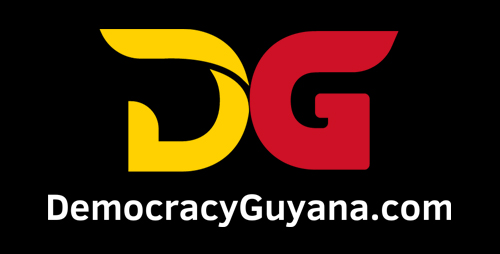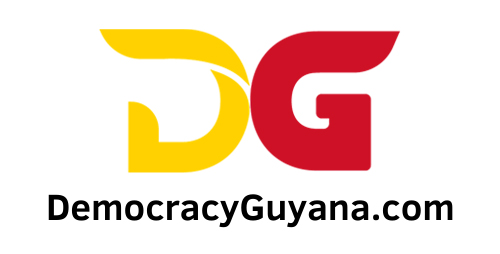Summary
Contrary to the notion that an oil price collapse below a certain price point could potentially engender a sovereign debt crisis, an oil price collapse will actually have zero impact on the country’s debt service capacity. The oil revenues are not utilized to service debt repayment. The debt repayment, principal and interest included, are serviced exclusively from the non-oil revenue, accounting for less than 10% of non-oil revenue, which is well below the maximum prudential benchmark of 30%.
Furthermore, the net forex reserves-to-external debt ratio, as it currently stands, is twice the size of the external debt. These are healthy, decent, and sound prudential debt sustainability indicators, owing to the increased inflow of forex from the oil and gas sector, deposited into the NRF, coupled with prudent debt management by the Government. Notably, in the pre-oil era, the external debt had always been greater than the net forex reserves.
Introduction
Over the past few weeks, proponents in a certain section of the media contended that Guyana could have a debt crisis should oil price collapse below a certain price point. At his press conference last Thursday, the Vice President dismissed this argument by highlighting the obvious—that is, the author’s failure to substantiate his/her contentions by way of any sort of debt sustainability analysis.
Subsequently, the proponent (s) sought to offer a rebuttal to the Vice President, arguing that the debt-to-GDP ratio alone to assess the debt sustainability framework is inadequate. Notwithstanding, the proponent (s) of that view nonetheless failed, once again, to substantiate his/her/their argument by even a minimum threshold of an analysis—save and except for his/her/their generically diabolical ramblings that appeared to have been plagiarized from “google”.
In this article, this author addresses the abovementioned contentions by presenting a summary analysis of the debt sustainability framework, which would show that contrary to the notion that an oil price collapse below a certain price point could potentially engender a sovereign debt crisis, an oil price collapse will actually have zero impact on the country’s debt service capacity. In so doing, the article examines key debt sustainability indicators other than the debt-to-GDP ratio, such as, the debt service to revenue ratio, debt service to non-oil revenue ratio, and (forex) reserves-to-external debt ratio (measured as total net foreign sector assets held in the banking system and the Natural Resources Fund (NRF).
Discussion and Analysis
Global Context
Total global debt (public plus private debt stocks) declined by 10 percentage points of global GDP and reached 238% of global GDP in 2022. In U.S dollars, global debt remained stable at US$235 trillion. The fall in public debt slowed compared to the previous year, as it fell 3.6 percentage points of GDP to 92% of GDP in 2022. The fall over the last two years reversed about half of the surge during the pandemic (IMF, 2023).
Local Context
Typically, debt is neither bad nor good. Debt facilitates the creation of wealth, viz-á-viz, increasing the money supply, thereby increasing wealth. But debt has to be managed sustainably because there are multiple risks associated with debt. When debt is contracted mainly to finance consumption or recurrent expenditure in public finance, this should always be contained to a minimal extent.
Consumption activities do not generate future income streams. Debt financing, on the other hand, when channeled towards productive activities (capital expenditure) that would generate and expand future income streams is necessary, albeit within a sustainable framework.
With this in mind, debt is not an isolated, absolute variable. Debt is dependent on other variables. Primarily, debt is relative to (1) the productive capacity (potential future revenue streams) of the economy and productive output (current levels of production) of a country in the case of public debt, of a firm in the case of corporate debt, of an individual (s) in the case of household debt. Thus, debt is also relative to (2) the revenue (cash flow) derived from the productive activities, and (3) relative to the market value of total assets utilized to generate the productive output when put to work. Generally, these are the fundamentals that are of key importance to always bear in mind when conducting a debt sustainability analysis, whether it is within a household context, corporate context, or a country’s context.
In the case of a country (at the national level or public debt), the productive assets of a country include the physical resources, human resources (population), and the natural resources. The productive activities carried out by individuals, firms, and the State/Government, in turn generate national (aggregate) income and/or wealth for the country, its people (households) and firms [Gross Domestic Product (GDP)].

Over the last two-decades (2001-2023), Guyana’s debt-to-GDP ratio fell from 207% in 2001 to 24% in 2023, which is expected to remain below 30% (27% of GDP) for the fiscal year 2024. The external debt-to-GDP ratio fell from a high of 169.5% in 2001 to 9.5% in 2023 and an estimated 11.3% for 2024. The external debt-to-net public sector foreign assets fell from 638% in 2001 to 63.5% in 2023, and an estimated 69.5% for 2024 (Fig.1).

As shown in (fig.2), over the last two-decades the public debt service-to-revenue ratio fell from a high of 125.6% in 2001 to a record low of 6.2% in 2023 and an estimated 6.3% for 2024. The debt service-to-non-oil revenue in 2023 was 9.5% and in 2024 is projected to decline by 10 basis points (bps) (9.4%). External debt service-to-exports ratio has declined from 11% in 2001 to 0.8% in 2023 and is projected to decline by 20 bps (0.6%) in 2024. This means that even if there is an oil market crash, the impact on the country’s debt service capacity would be negligible or having a virtually zero-impact. This is especially the case given that the debt service to non-oil revenue ratio is well below the maximum prudential benchmark of 30%. Simply put, the oil revenues are not utilized to service debt repayment. The debt repayment, principal and interest included, are serviced exclusively from the non-oil revenue, accounting for less than 10% of non-oil revenue.
The proponents could, however, argue that in a situation where oil price may collapse below a certain price point, that this would negatively impact the sector, and thus allow for a downturn across broader economic activities within the oil and gas value chain and other related sectors. But even in this situation, a debt crisis is unlikely to be triggered, simply because the Government is investing heavily in the non-oil economy aimed at expansion and diversification of the non-oil economy.
Further, the fiscal and debt sustainability framework, remains relatively resilient to withstand a great degree of external shocks. Of note, the oil price volatility risk is a given in the global industry, such that, there will always be price fluctuations based on market dynamics, geopolitical events, and other factors.

The country’s total stock of debt (i.e., public, and private sector [households included] debt) fell from 264% of GDP in 2001 to 35% of GDP at the end of 2023, which is well below the global level (fig 3).
In (fig 4) below, the chart shows the forex reserves-to-external debt ratio for the period 2014-2023. This ratio measures the extent to which the country’s net forex reserve can cover its external debt repayments in principal and interest. As shown in the chart above, this indicator almost for the entire pre-2015 period, has always been less than 1, wherein a ratio of less than 1 signifies that for every dollar of external debt, there less than $1 dollar of net forex reserves to cover the outstanding debt. In other words, a ratio of less than 1 means that the international reserves is insufficient to cover the total external debt, assuming that 100% of the outstanding debt are to be repaid on demand inclusive of interest.
Conversely, in actuality during this period 2021-2023, this ratio continues rise above 1 or above 100%, which is indicative that for every dollar of external debt, there is more than
$1 dollar of net forex reserve to cover the outstanding debt and interest payments. As of the end of 2023, this ratio was 1.95 or 195%. These are healthy, decent, and sound prudential debt sustainability indicators, owing to the inflow of forex from the oil and gas sector, deposited into the NRF, coupled with prudent debt management by the Administration.

Source: Author/Bank of Guyana Reports, Budget Estimates, Various Years
Conclusion
In view of the foregoing empirical analysis, it is safe to assert that Guyana’s public debt indicators are well below the low-risk category in accordance with the IMF risk profile benchmarks, whereby countries with a debt-to-GDP ratio of <50% are considered low risk, 50-90% are considered moderate risk and >90% are considered high risk. To this end, public debt-to-GDP ratio is 24% as of 2023, which is projected to increase by three
(3) percentage points at the end of 2024. More importantly, the public debt service indicators are also well within the low-risk bracket, with a debt service-to-revenue ratio of 6% and non-oil revenue of 9.5%, down from a high of 125% in 2001. Guyana’s total debt, which includes both public and private sector debt accounted for 35% of GDP at the end of 2023. This is 203 percentage points below the global debt-to-GDP as of 2022, which stood at 238%. The global public debt-to-GDP was 92% in 2022, whereas Guyana’s public debt-to-GDP is less than 30% of GDP, about 65 percentage points below the global level. Taken together, all of Guyana’s debt sustainability indicators are well within the low- risk range and more importantly, far below the global levels. This trajectory is expected to remain in the low-risk range over the near to medium term.





